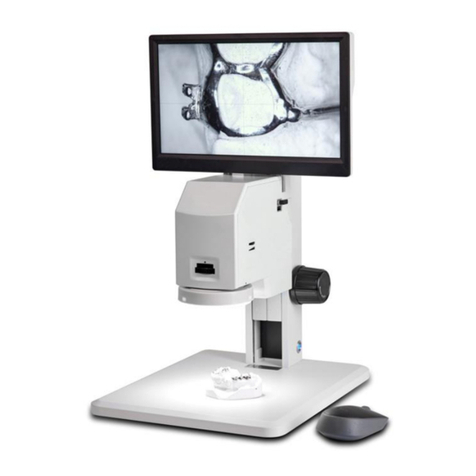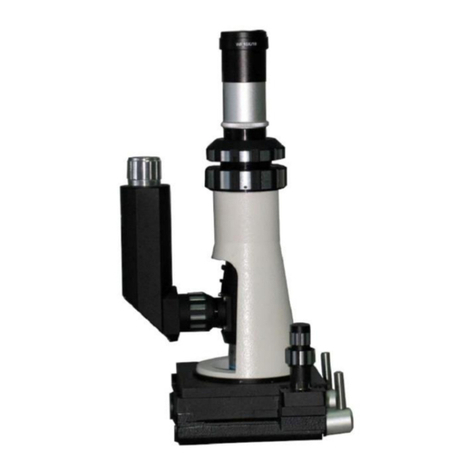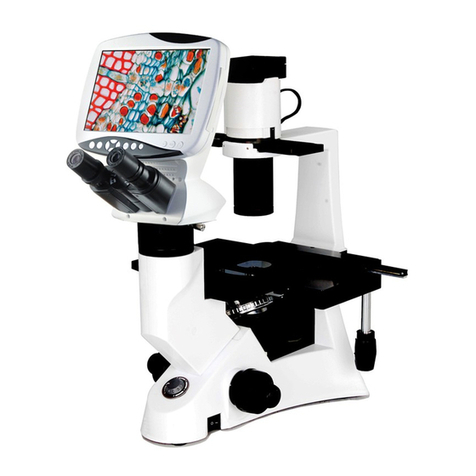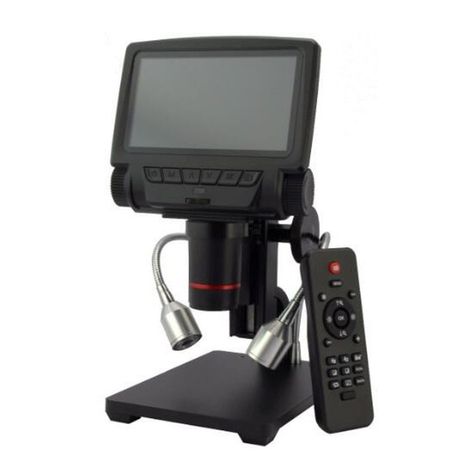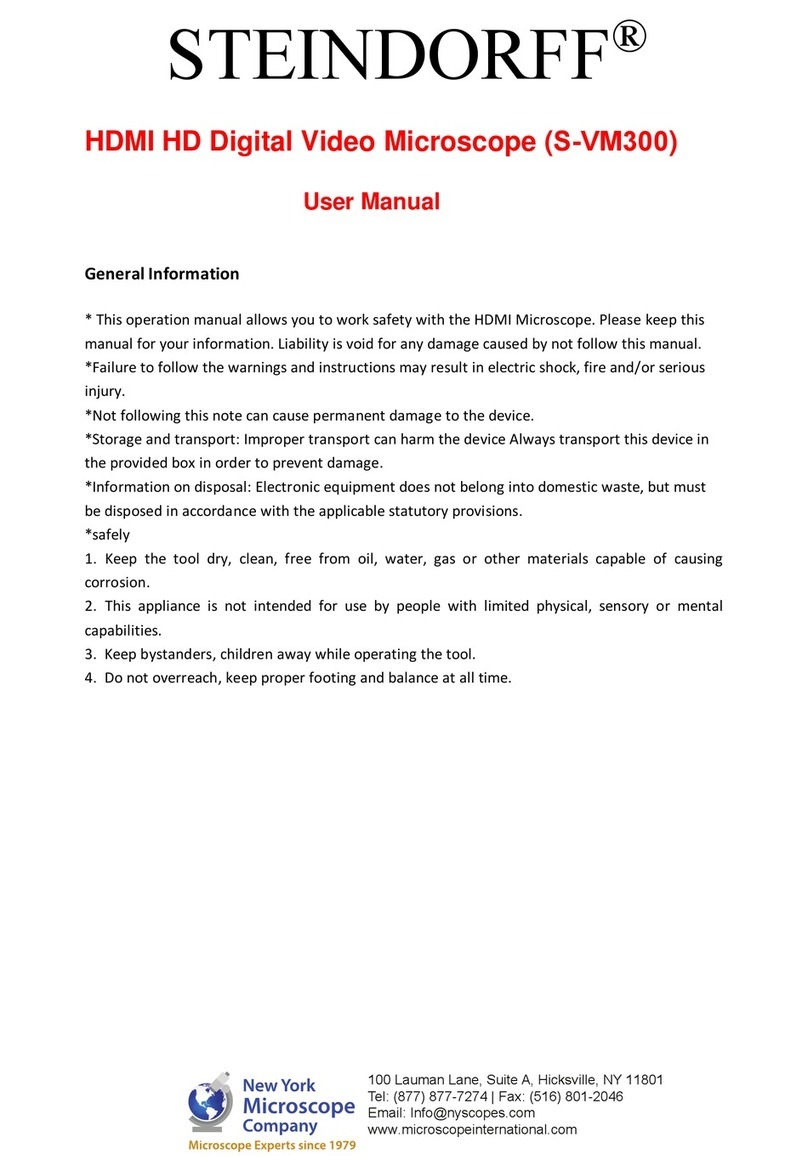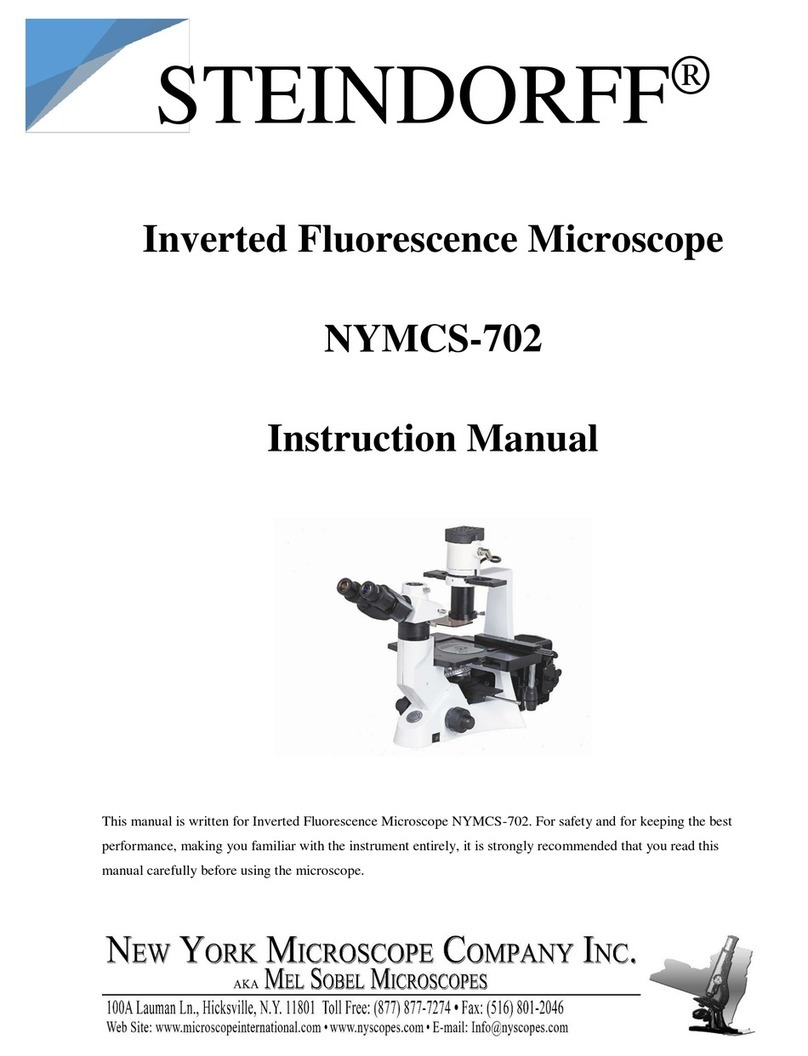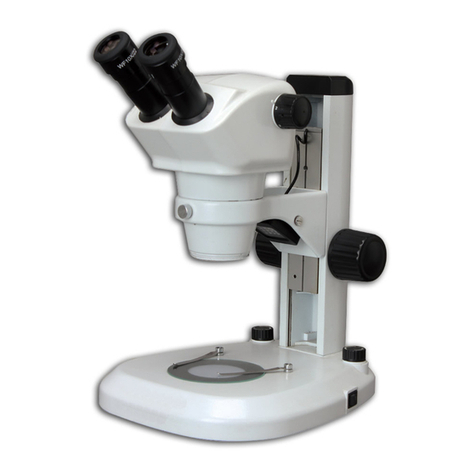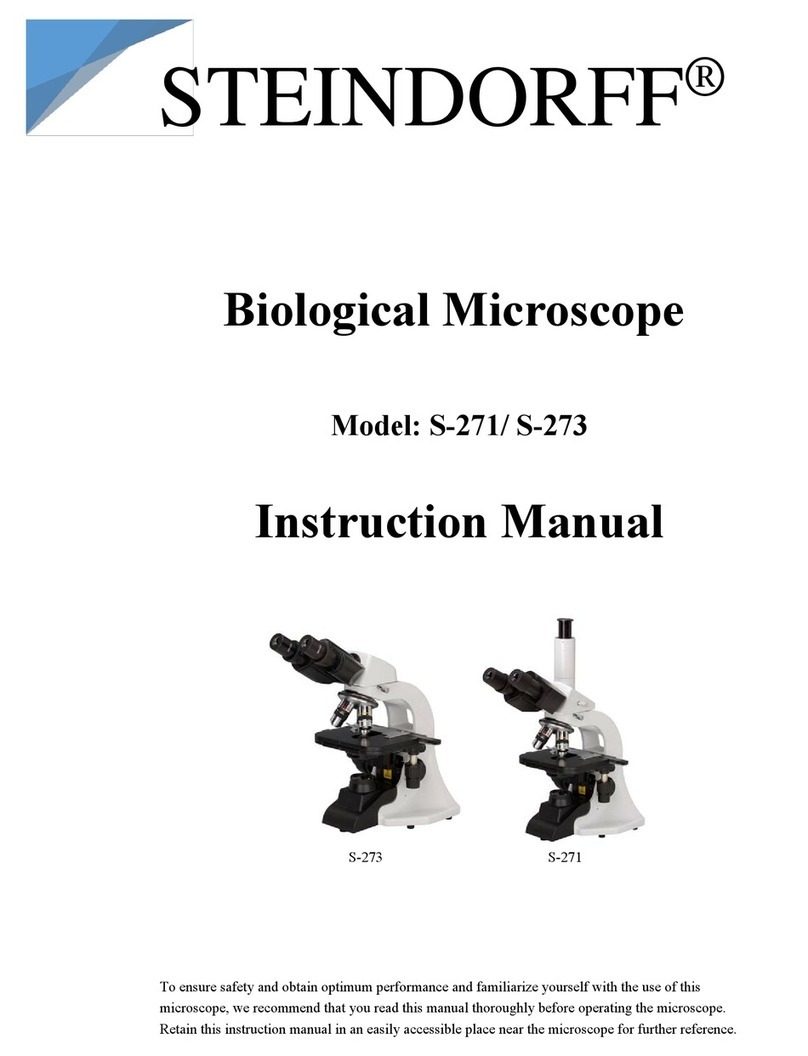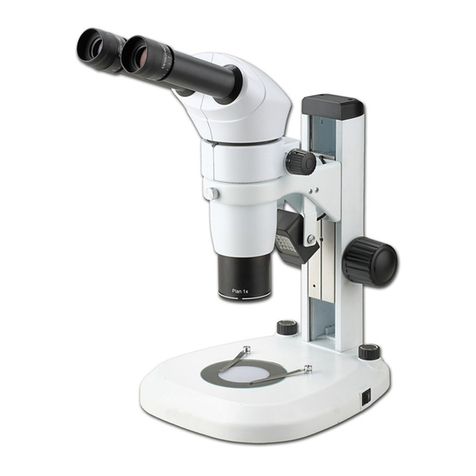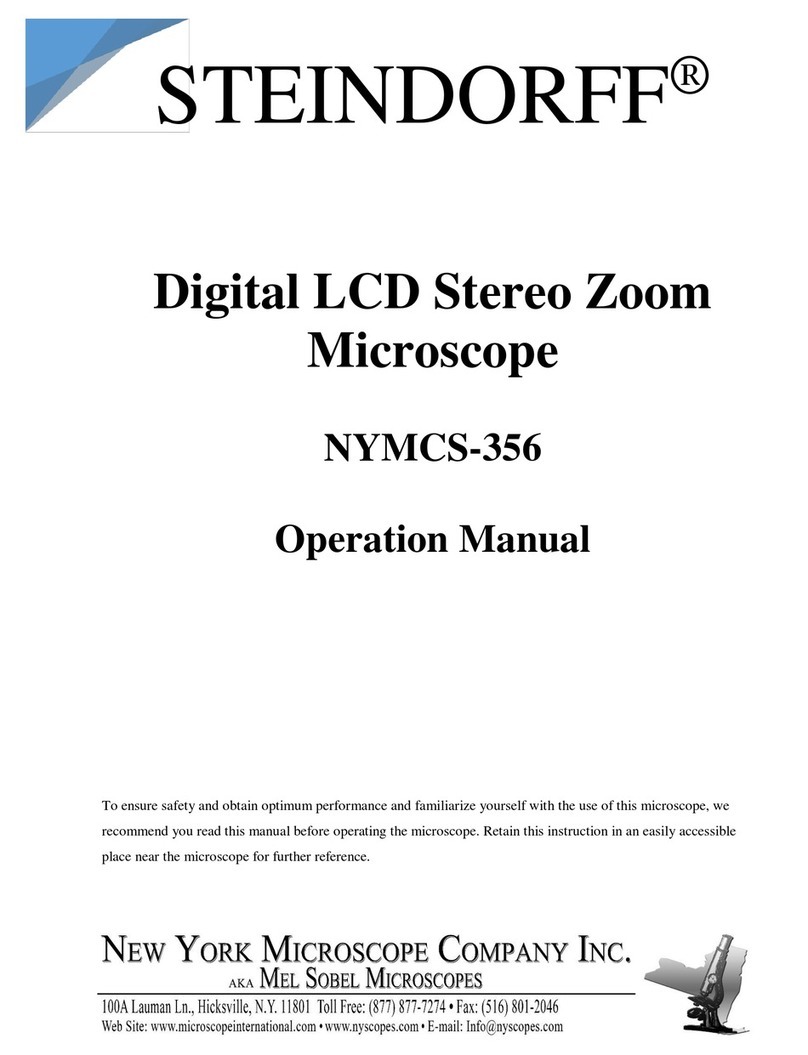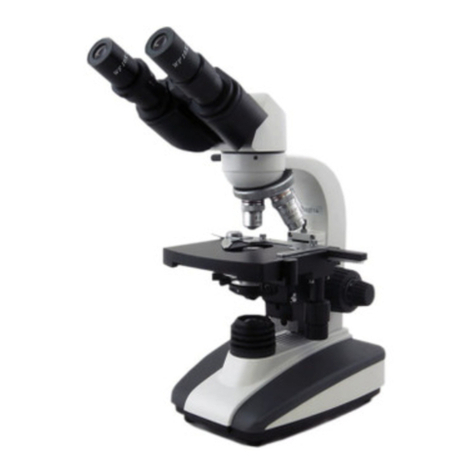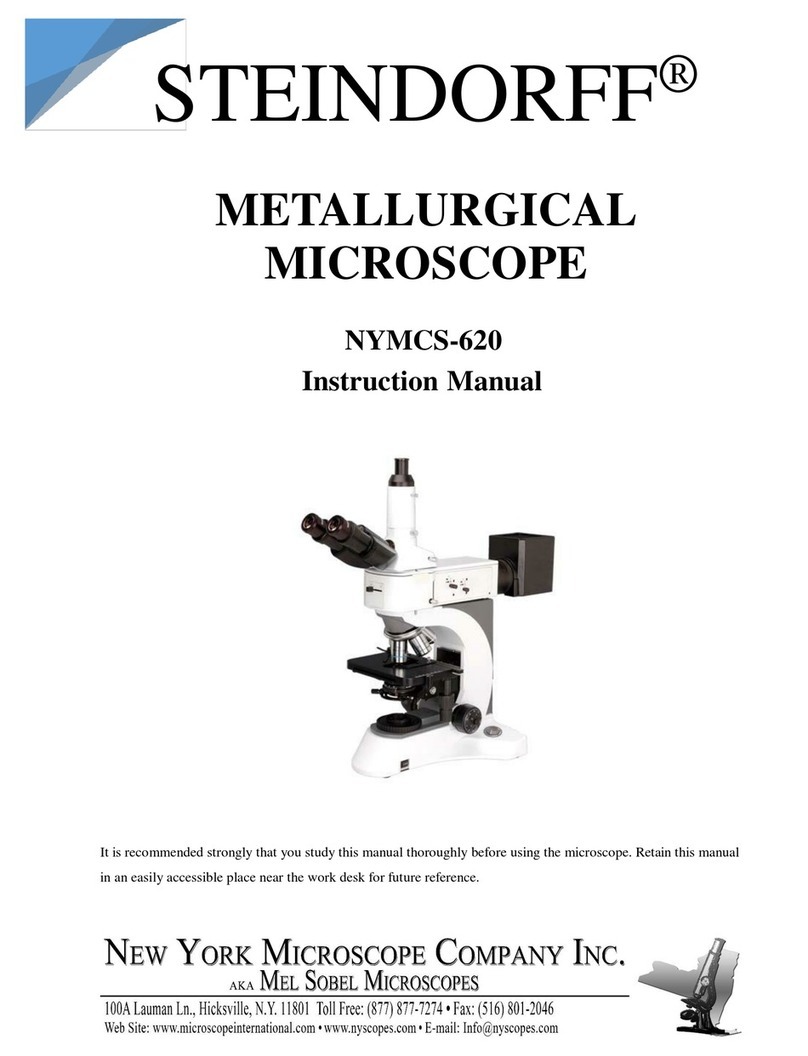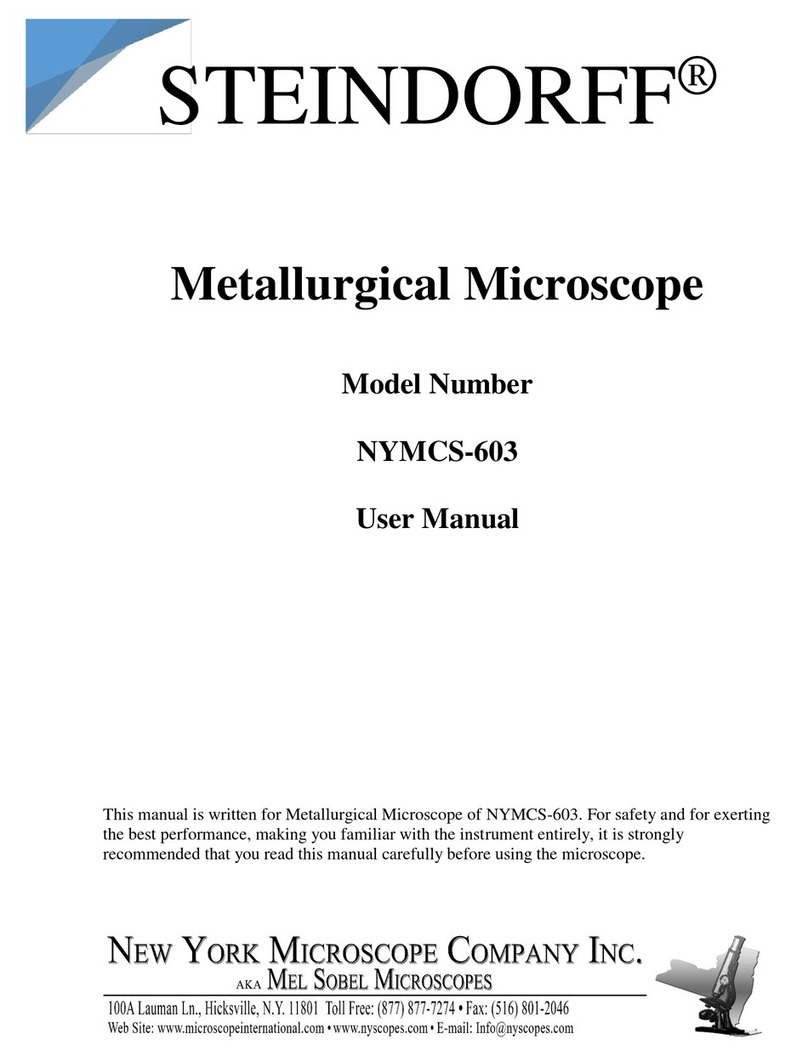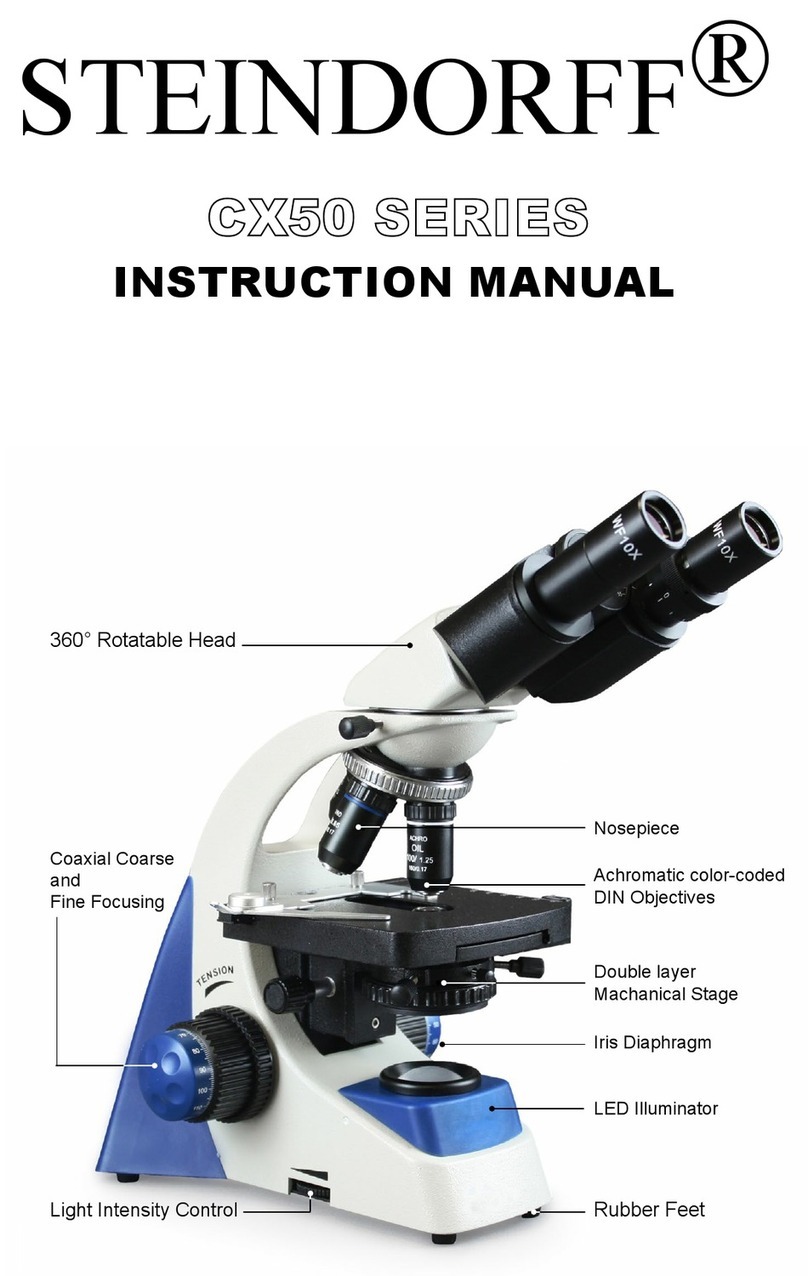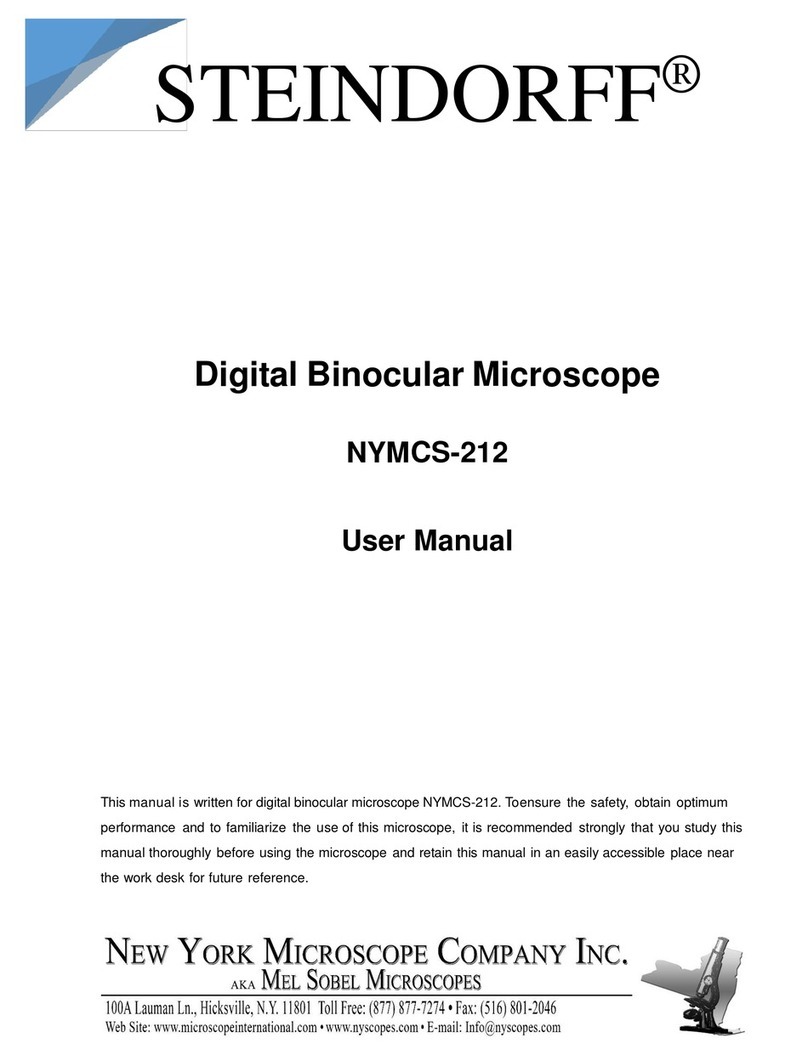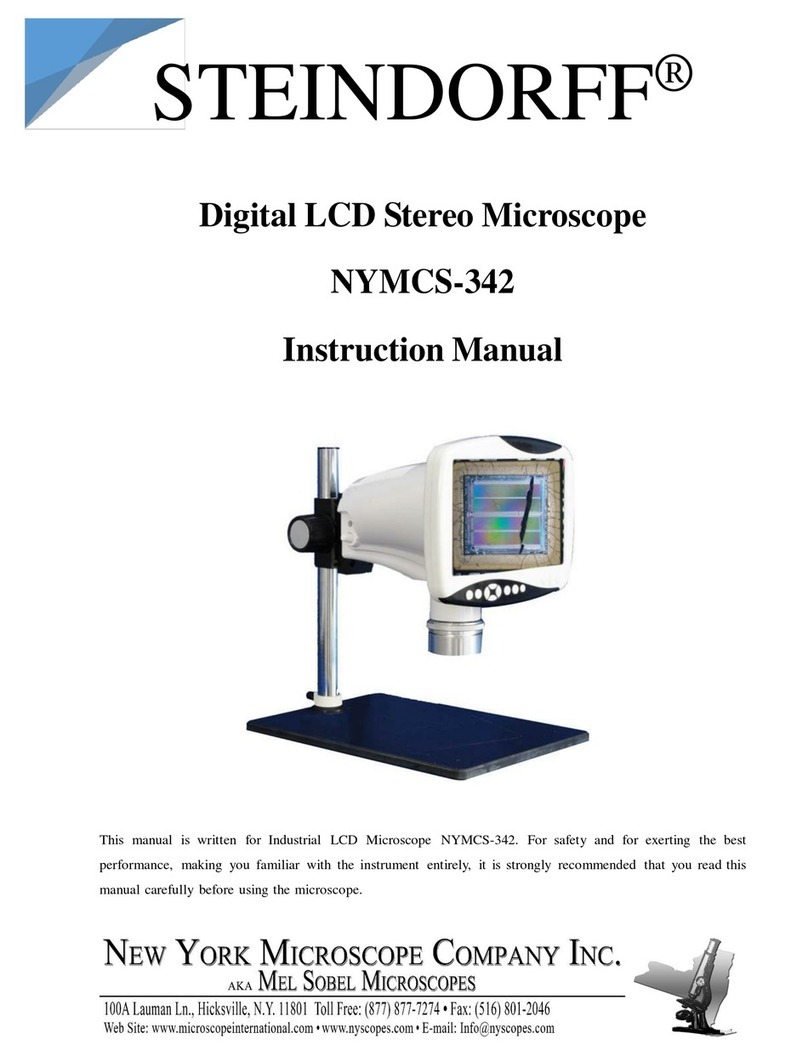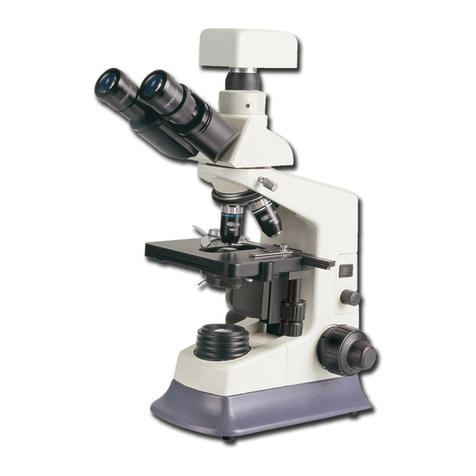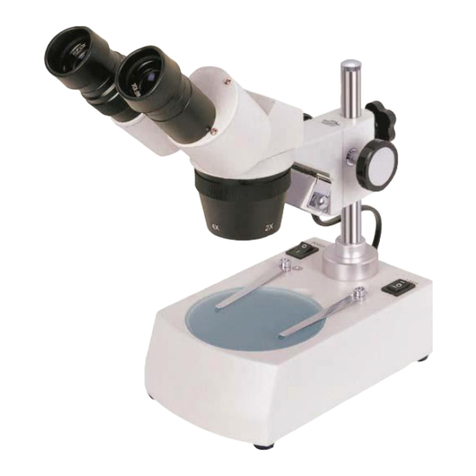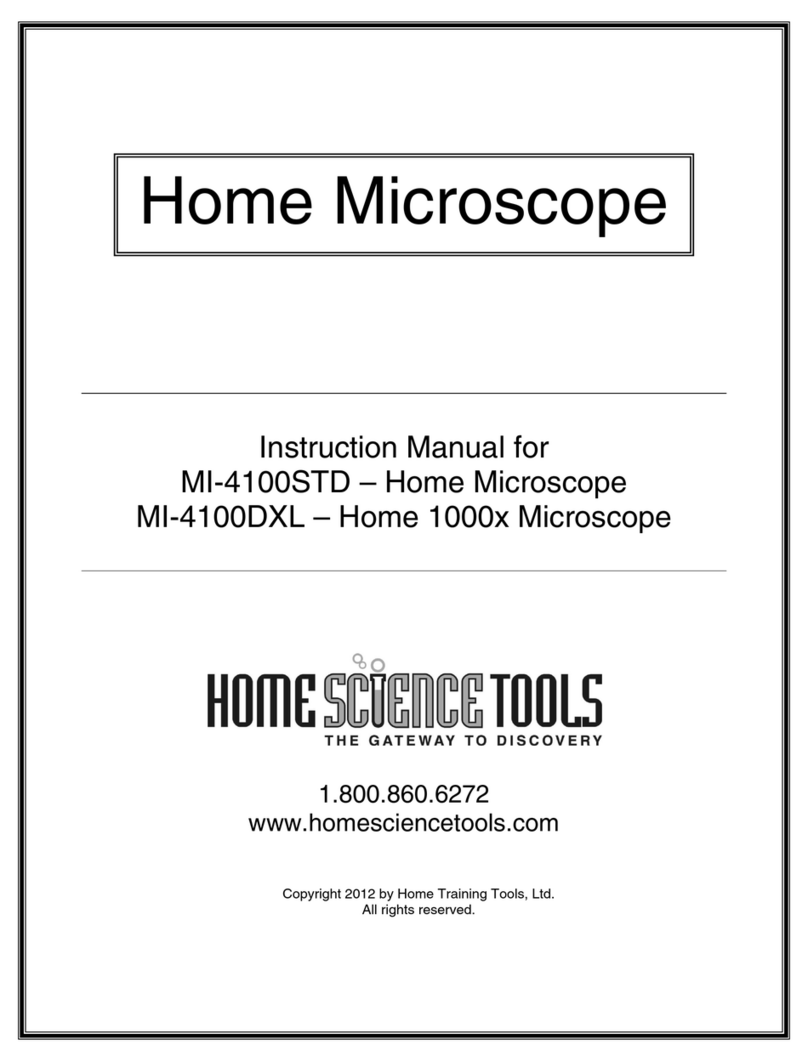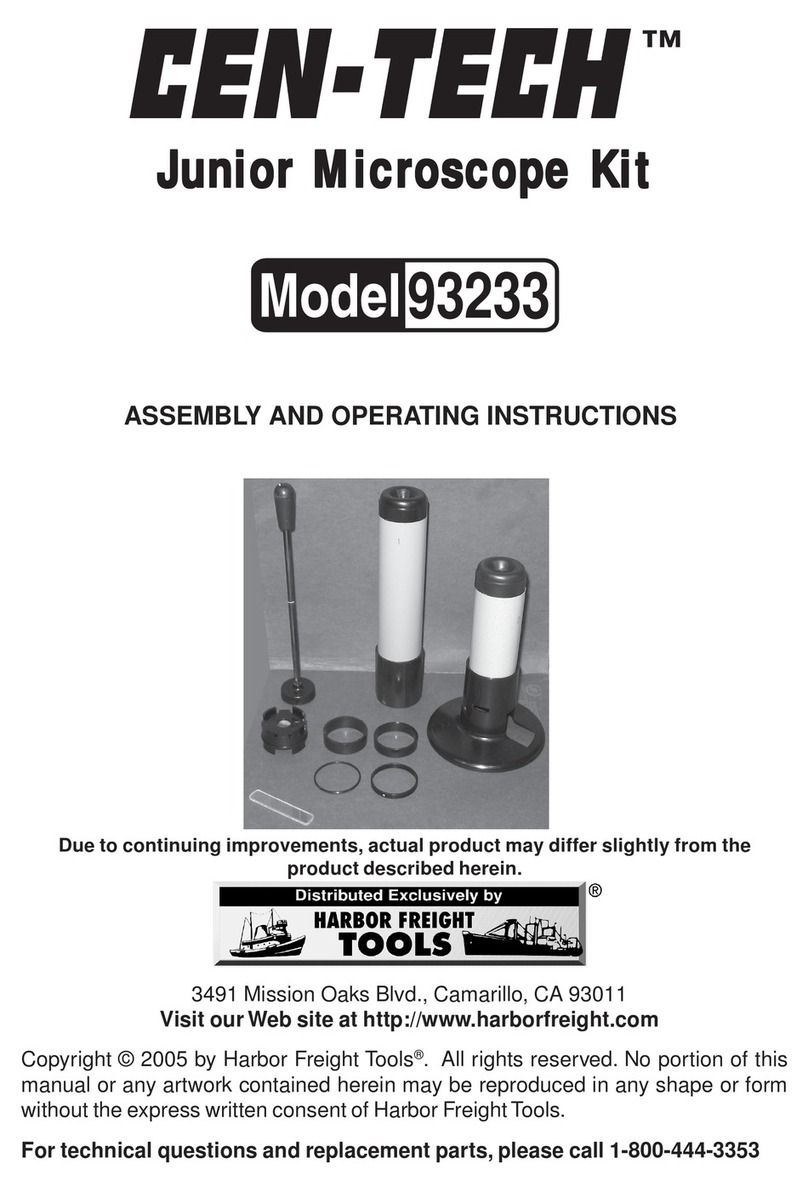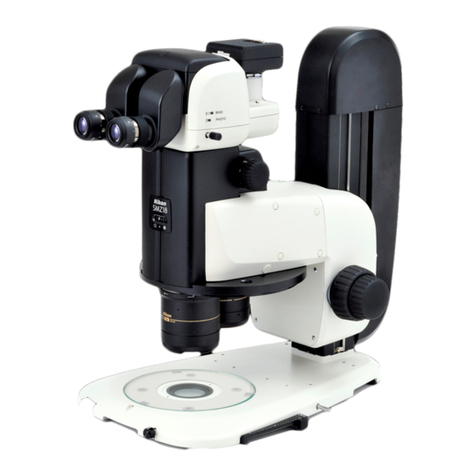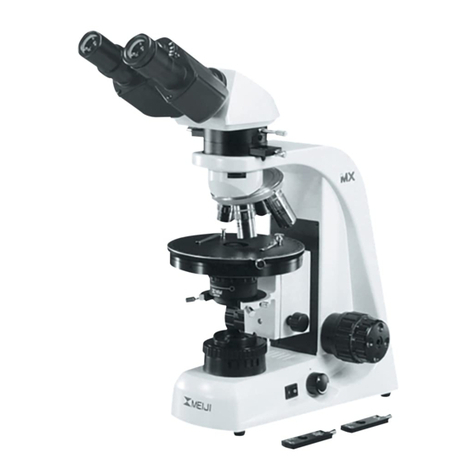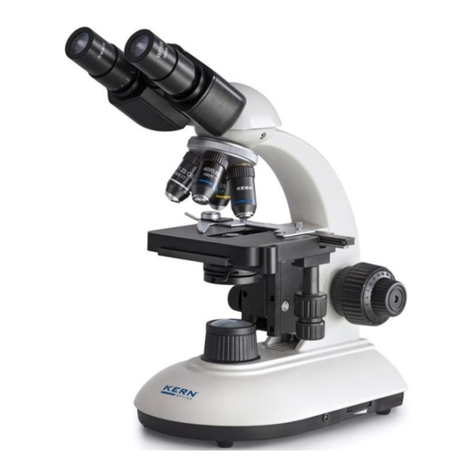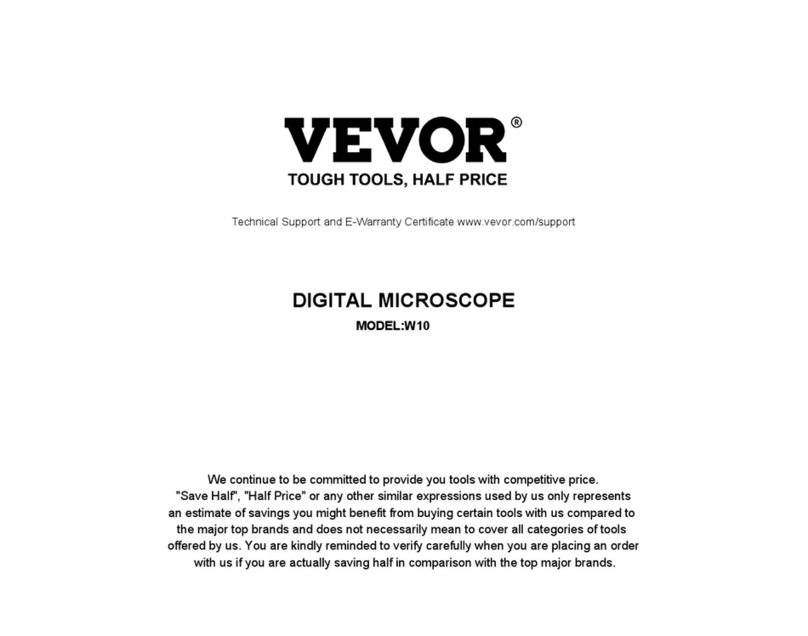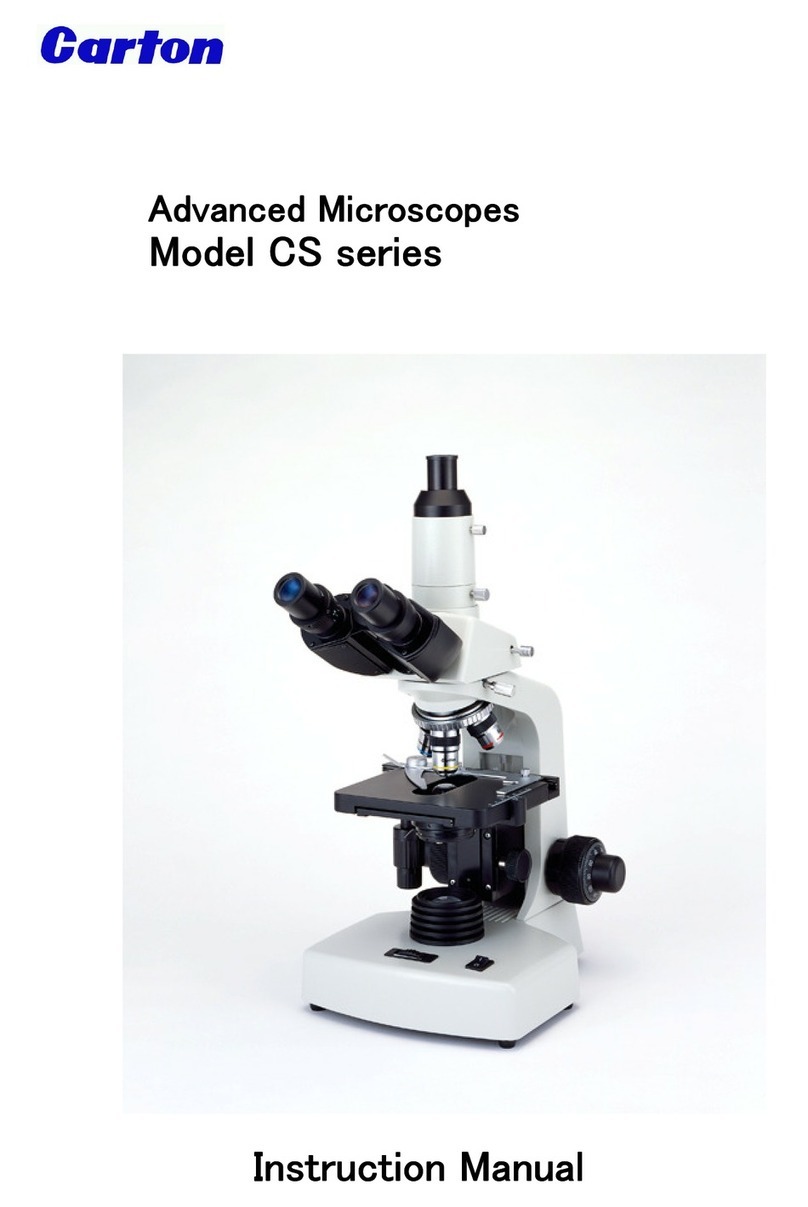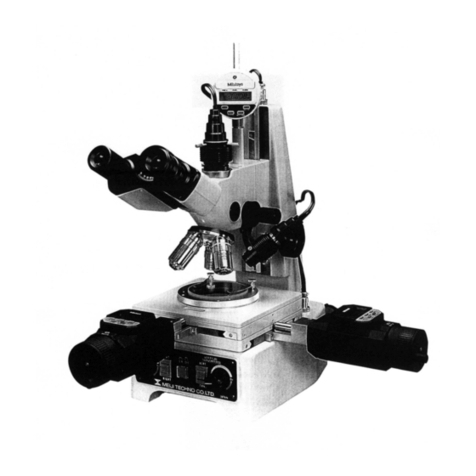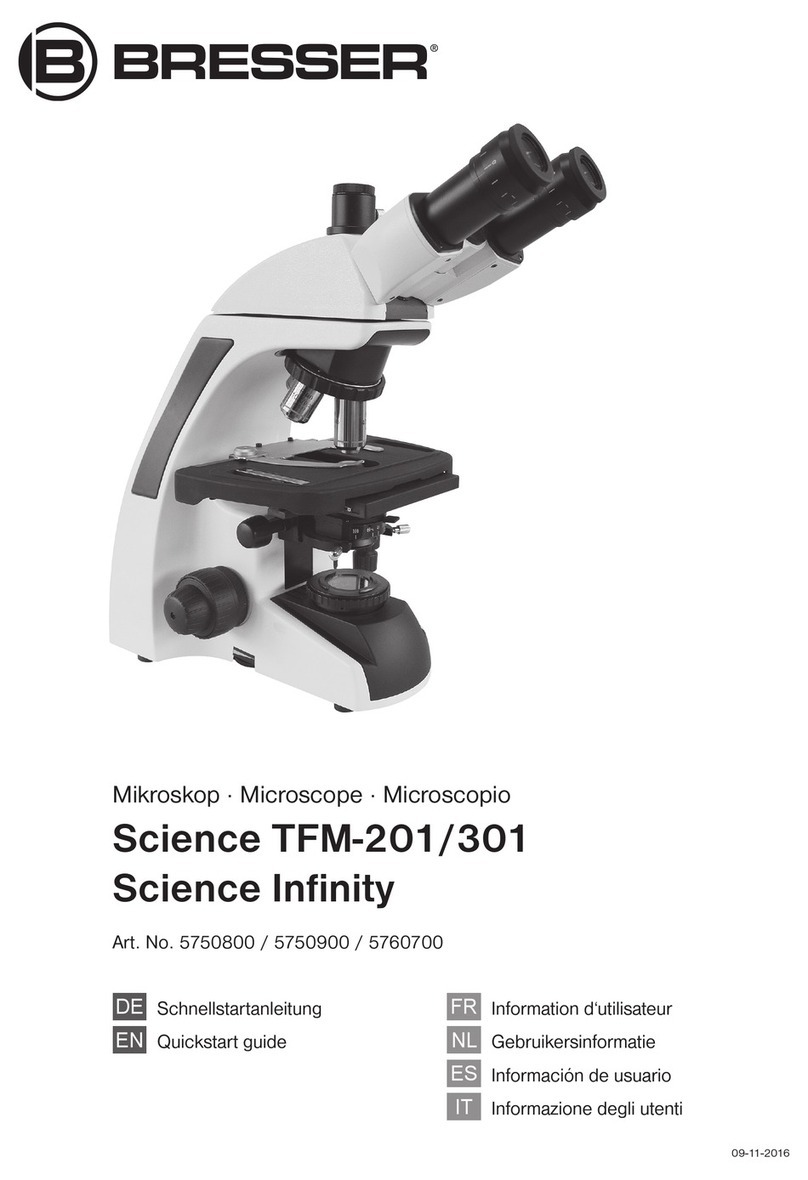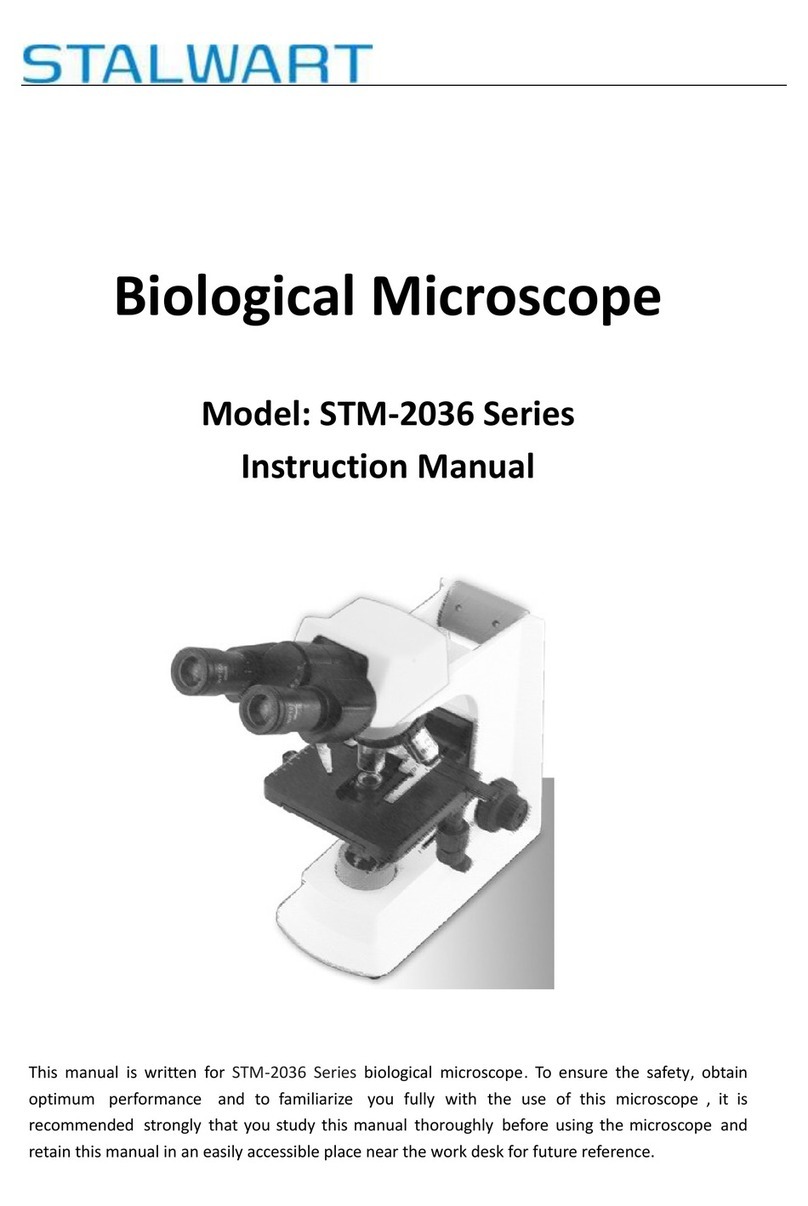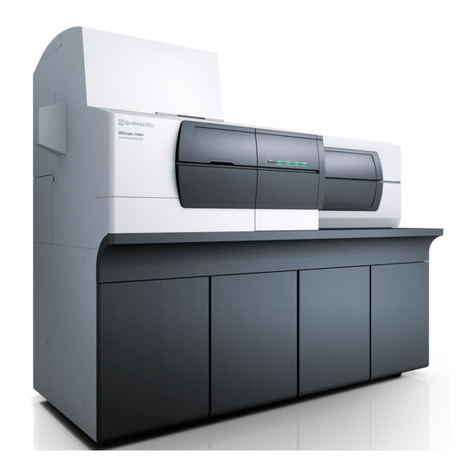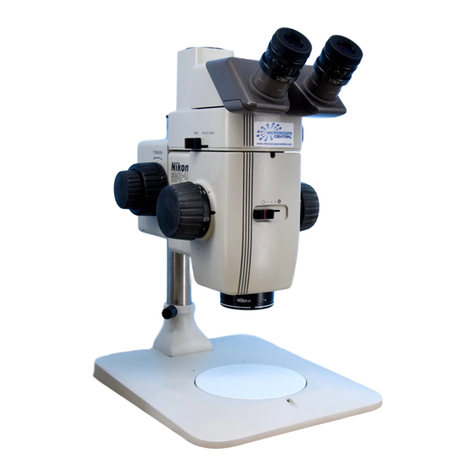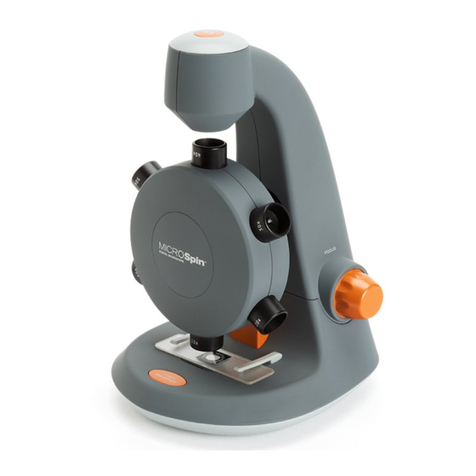
STEINDORFF®
3. Remove the dust cover from the binocular head (4) and fit the wanted eyepiece in its place;
4. Plug one end of the power line into the socket on the base (13) and the other end into a
socket of good grounding connected with a 220V power source. Connect all the other lines as
required;
5. With all the above done, the instrument is ready for use now. A sheet of paper is to be
placed on the two stage plates (20), turn on the main switch (16) and the light, adjust the focus
knob (17) and look at the sheet on the stage plates (20) through the eyepieces (3). The clear
observation can be obtained by working up or down the elevating knob (12).
The user is supposed to know clearly about the different functions of the different mechanical
parts and also about the operating procedures before turning the instrument into the working best
conditions.
D. Function and Operation
1. Operation of the Stage: The stage moves with the adjustment of the handle (14) and its
plate (20) can make a 3600 rotation. The plate (27) can incline to a certain degree and the two
stages interact with each other with the turning of the reaction knob (18).
2. Focus: Turning the focus knob (17) can move the two stages up and down. The elevating
knob enables them to move either upwards or downwards respectively.
3. Adjustment of the Light: The 24V150W luminescence light spot can be adjusted by turning
the luminescence lens (22) and its holder can also be regulated to the desired position. Adjusting
the lamp stand (24) affects different light angles. Adjusting the regulator (15) controls the intensity
of the light. The wave filter base (35) can hold a wave filter or polarizer. If the bulb does not work,
replace it with a new one.
4. Function, Regulation and Operation of the Separation Line: The separation line is thin,
black and straight, as is shown in Picture 4. If it appears as is shown in Picture 2 or Picture 3, this
means the line has changed out of shape, and needs adjusting in the following way: Remove the
